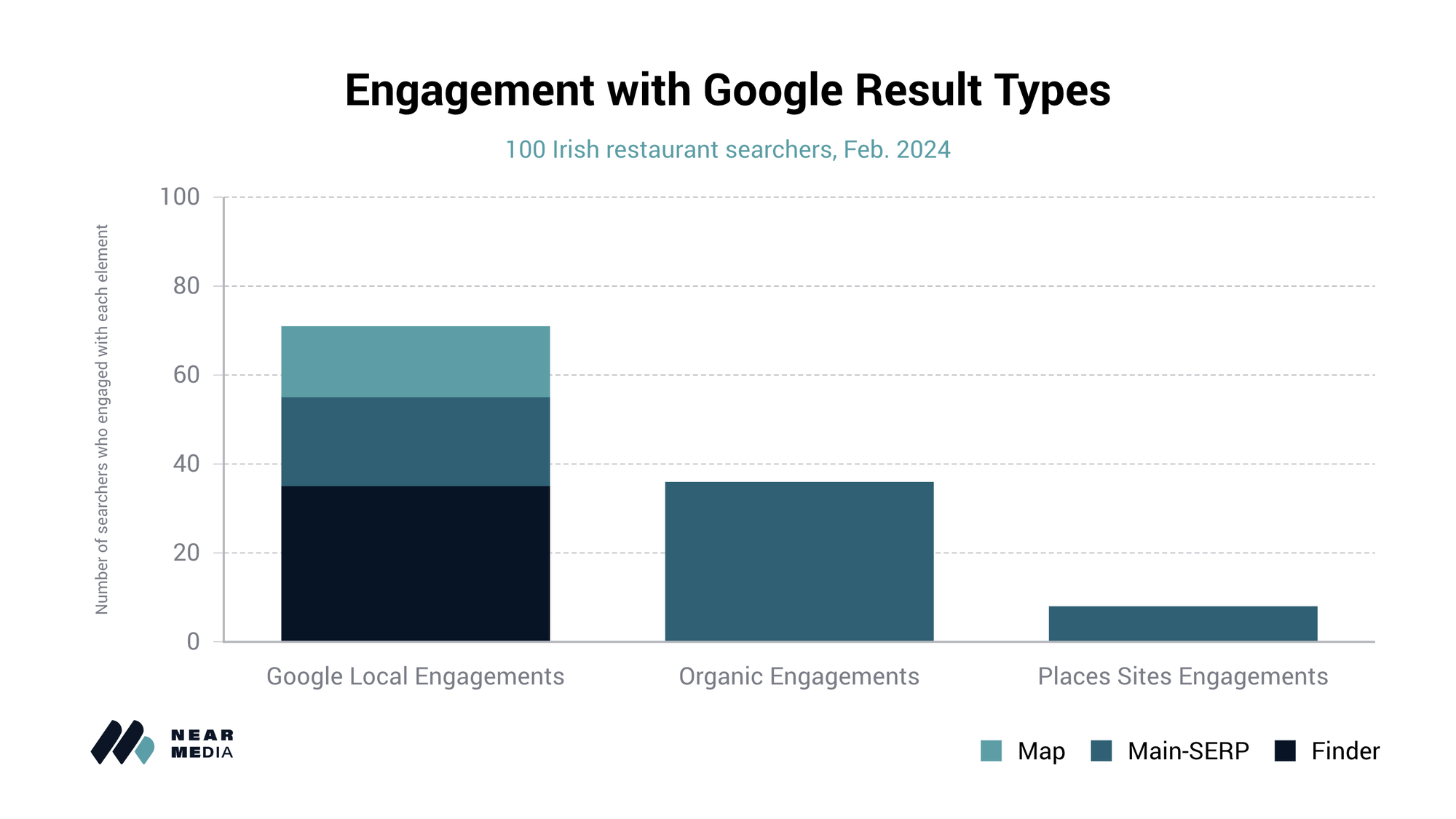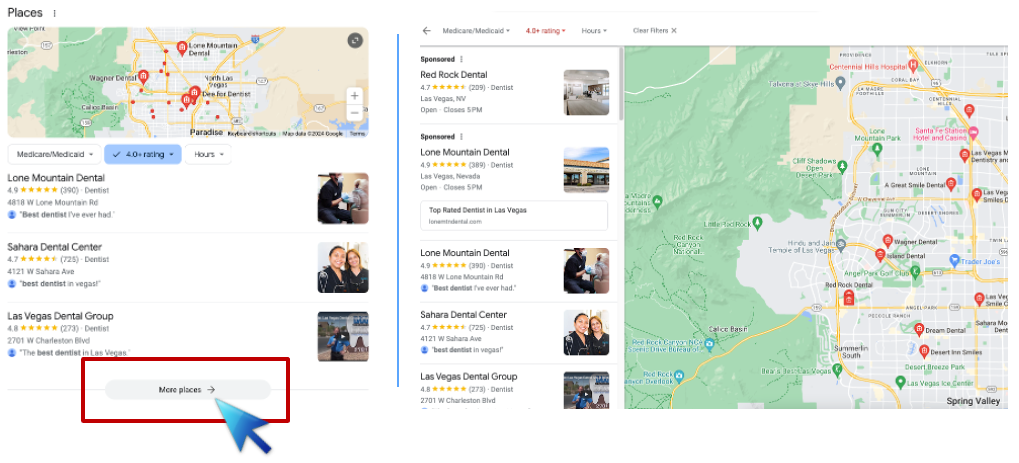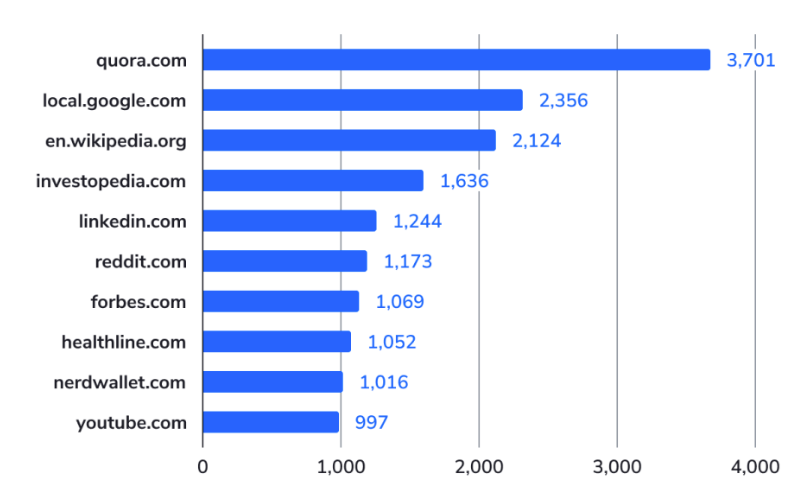Places Sites Fail, More Places MIA, Google Maps in SGE

Google DMA Changes: No Impact
In anticipation of Digital Markets Act (DMA) enforcement in March, Google introduced new search-results features to comply within Europe. Google is one of six "gatekeepers" designated under the DMA. The others are Microsoft, Apple, Meta, ByteDance (TikTok) and Amazon. The DMA mandates that these companies not give preferential treatment to their own products or services. In Local that effectively means Google not favoring the Local Pack and/or otherwise highlighting rivals. The "marquee" feature in these search-results changes is a Places Sites module, a horizontal scrolling carousel, that highlights directories and content sites containing local information. To test the impact on user behavior we conducted a study in the restaurant vertical in Ireland (an English speaking member of the EU). We recorded 100 users conducting Google restaurant searches. You can explore the full results here. The bottom line: most clicks were on the Local Pack, Local Finder or organic results. Places Sites saw little engagement, even when highly visible on the page (i.e., #1 or #2 SERP position). Yelp, a long-time Google antagonist, also conducted research with similar results.

Our take:
- Zero-click results were significant: ~50% of mobile and a third of desktop users never left Google.ie while choosing a restaurant. This will vary from vertical to vertical.
- Tripadvisor was the only directory that saw meaningful click volume – because it ranked well organically and because of its strong brand.
- Most clicks to directories came from organic results, not the Places Sites module, which promotes them. There's a major question now about Google's compliance. What does "success" look like?
'More Places' Missing
For roughly 24 hours this week, the Local Pack's "More Places" link into the Local Finder was gone. More Places takes users to a longer list of local businesses beside an expanded Google Map (see below). In informal discussion on social media, some marketers questioned whether or how often people click on More Places. Previous Near Media research shows that in fact people do click into and consider businesses in the Finder. In some categories, it can be a major source of clicks. Most recently, in the restaurant research discussed above, Finder clicks were ~30% of the total. Accordingly, people considered the top three listings in the Local Pack and then moved into the Finder to see other options. In other verticals we've seen similar results. In Legal, for example, Finder clicks were 19% of the total and in Medical 23%. That's the percentage of overall clicks going to More Places. Drilling down, over half of all GBP clicks in our Medical study came from the Finder and in Legal it was ~55%. We also observed that many users go deep into Finder results, often to locate better reviewed businesses. So the Finder is an important source of local leads; it's good the problem was a bug.

Our take:
- The data above come from specific studies for clients that capture usage from a finite group of users. This is not mass analytics data.
- Yet many consumers are looking to the Finder as a source of additional listings and very often scrolling deeply to engage with those listings.
- Removing More Places would greatly limit the number of GBP businesses users would see. Most GBP/Finder engagements are zero-click.
Google Maps #2 in SGE
Google SGE continues to expand to new countries. And new research continues to appear tracking its evolution. BrightEdge is one source. Another is SE Ranking, which is out with new research. The later analyzed more than 100,000 keywords, finding that 64% of them prompted an SGE default snippet (18.5%) or "generate" button (45.1%). For SGE snippets that show by default, Google often requires users to click "show more" to get the full answer. In addition, the study found the text-length range of SGE snippets was "between 3,044 and 4,646 characters" or roughly 609 to 929 words. That has implications for the visibility of other results, on desktop and especially mobile. And speaking of links, the "most common number of links in the SGE answer after expanding is 8," but only 2-3 before (show more) expansion. The vast majority (~86%) of those links came from the top 10 organic results. (What's not clear is whether anybody clicks on them in SGE.) The most frequent websites appearing as SGE links/sources are those in the graphic below. The top three in order are Quora (spammy), Google Maps and Wikipedia. Similarly, according to BrightEdge, "[Google] Places have become the most common module to appear in SGE results." However, the most-linked sites vary by vertical according to SE Ranking. And certain verticals triggered SGE results more often than others, with food & beverage at the top, news & politics at the bottom.

Our take:
- Other findings: longer length/long-tail queries are more likely to trigger SGE results. Ads appeared with (not inside) SGE snippets 73% of the time.
- As pressure for Google to launch SGE has eased the company decided to "continue to offer SGE in Labs as a testbed for bold new ideas." It will likely roll out new features into search incrementally, over time.
- If 90% of SGE links come "from the top 10 organic results," that's good news. Perhaps the doomsday scenarios won't come to pass.
Recent Analysis
- Is Google's DMA Compliance DOA for Local Search in Europe?, by Near Media
- Near Memo episode 147: Long tail searcher behaviors, Gemini switch appears, content publishing being upended by search
Short Takes
- Poll: 68% of SEOs like Google less today (n=1,769).
- New GBP layout with numerous drop-downs being tested.
- Google showing third party reviews on EU Google Business Profiles.
- Google CEO Sundar Pichai calls Gemini images snafu "unacceptable."
- Reddit was overexposed in SERPs; Google now trying to correct.
- Google LSA bug showed competitors for direct searches despite promises.
- 80% of Bloomingdale's e-commerce in cities with physical stores.
- Stores driving Warby Parker's sales growth; many more coming.
- AI is already being widely used in newsrooms but it won't save news.
- How mobile location data has been used for surveillance for years.
- Despite big returns, Apple watcher declares Vision Pro a success.
- B2B buyers: gated vendor content mostly disappointing.
- Apple CEO Cook promises generative-AI "breakthrough" this year.
- Why the Apple Car was destined to fail (NYT).
Listen to our latest podcast.

How can we make this better? Email us with suggestions and recommendations.

